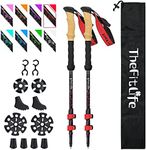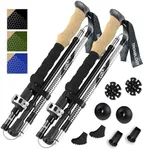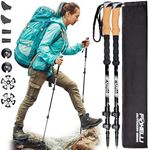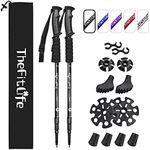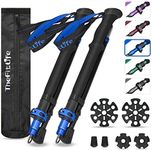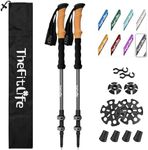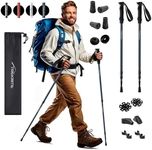Buying Guide for the Best Trekking Poles
Trekking poles are essential tools for hikers and trekkers, providing stability, reducing strain on your legs, and enhancing your balance on uneven terrain. Choosing the right trekking poles involves understanding various features and how they align with your hiking needs. Consider factors such as the type of terrain you'll be navigating, your physical condition, and the length and duration of your hikes. By evaluating these aspects, you can select trekking poles that will enhance your hiking experience and provide the support you need.MaterialThe material of trekking poles affects their weight, durability, and cost. Common materials include aluminum and carbon fiber. Aluminum poles are generally more durable and less expensive, making them a good choice for rugged terrain and beginners. Carbon fiber poles are lighter, which can be beneficial for long hikes or when every ounce counts, but they can be more expensive and less durable if subjected to heavy impacts. Consider your hiking style and terrain; if you prioritize weight savings and hike on less rocky paths, carbon fiber might be ideal. For more rugged use, aluminum could be the better choice.
AdjustabilityAdjustability refers to the ability to change the length of the trekking poles. Adjustable poles are versatile and can be shortened or lengthened to suit different terrains or user heights. They are particularly useful for varying inclines, as you can shorten them for uphill climbs and lengthen them for descents. Fixed-length poles are lighter and simpler but lack this versatility. If you often hike on varied terrain or share poles with others, adjustable poles are a practical choice. For those who prefer simplicity and hike on consistent terrain, fixed-length poles might suffice.
Grip MaterialThe grip material of trekking poles affects comfort and moisture management. Common materials include cork, foam, and rubber. Cork grips conform to your hand over time, absorb sweat, and reduce vibration, making them comfortable for long hikes. Foam grips are soft and absorb moisture, providing comfort in wet conditions. Rubber grips are durable and provide a firm hold, ideal for cold weather but can become slippery when wet. Choose a grip material based on the climate and conditions you typically hike in; cork is great for long, dry hikes, foam for wet conditions, and rubber for cold environments.
WeightThe weight of trekking poles can impact your energy expenditure over long hikes. Lighter poles are easier to carry and swing, reducing fatigue, especially on long treks. However, lighter poles, often made from carbon fiber, can be more expensive and less durable. Heavier poles, typically made from aluminum, offer more durability and stability, which can be beneficial on rugged terrain. Consider the length and difficulty of your hikes; if you prioritize endurance and speed, opt for lighter poles. For more challenging terrains where durability is key, heavier poles might be more suitable.
Locking MechanismThe locking mechanism on adjustable trekking poles secures the pole at the desired length. Common types include lever locks and twist locks. Lever locks are easy to adjust and reliable, even in cold or wet conditions, making them a popular choice for most hikers. Twist locks are lighter and more streamlined but can be less reliable if not properly maintained. If you need quick and easy adjustments, especially in varying weather conditions, lever locks are recommended. For those who prefer a lighter setup and are comfortable with maintenance, twist locks might be adequate.
